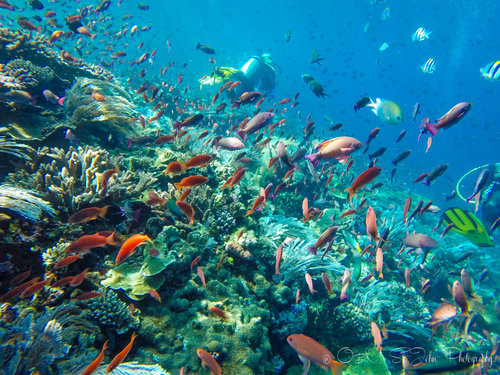While tourists flock to this part of Indonesia to see the famous Komodo dragons. Diving in Komodo is where the natural highlights can be discovered underwater. Five anemone fish species, up-close encounters with mantas, sea turtle sightings on nearly every dive, and many bizarre macro critters. Make this destination one of the best in the world for diving.

In 1980, the area was designated as a national park to help protect the famous lizards, and protections were expanded in 1984 to include the marine environment. In 1990, protection and management were strengthened, and Komodo National Park was designated a UNESCO World Heritage Site in 1991.
The Diversity
The Komodo area offers various dive types, including fringing reefs, pinnacles, and sea mounts. Protected bays, colorful walls, massive boulders, caverns and swim-throughs, colorful reefs, white slopes, and black volcanic sand. The varied conditions and topography attract various species of marine life, resulting in ecosystems that are unique to most sites. Many sizeable pelagic fish, mantas, 18 cetaceans, whale sharks, dugongs, green and hawksbill turtles, and other species live or visit Komodo National Park. Experienced dive guides have spent many years fine-tuning exciting and unusual dive plans to maximize fun while remaining safe.
Gentle and powerful drift dives, more accessible reef dives, holding on to rocks in strong currents, hiding on the protected side of pinnacles, and muck dives are all examples of diving styles (looking for the small stuff). Some dive sites provide alternative plans for the best diving in Komodo for a stunning underwater journey. Allowing advanced divers to experience stronger currents, groups that prefer efficient diving can have a more relaxed atmosphere.
The Turtle
Besides providing incredible underwater diversity, if you like these aquatic reptiles, you will adore Komodo dragons. The hawksbill and green turtles we encountered were not afraid of us. They allow you to swim while they feed on coral or seagrass. Komodo National Park provides adequate turtle breeding space as an archipelagic national park with a relatively wide coastal area.

The Range of Diving Spot
Komodo National Park has many world-class dive sites for divers of all levels. Almost all complement one another. When visiting Komodo north of Gili Lawa Laut, Castle Rock, and Crystal Rock, Arenui’s range is only 35 miles. The northern area is suitable for intermediate-professional divers. While in the south, there are areas such as Yellow Wall, Canibal Rock, Pillarsteen, Secret Garden, and Manta Alley, where you can dive with stingrays. The south is ideal for beginning to intermediate divers.